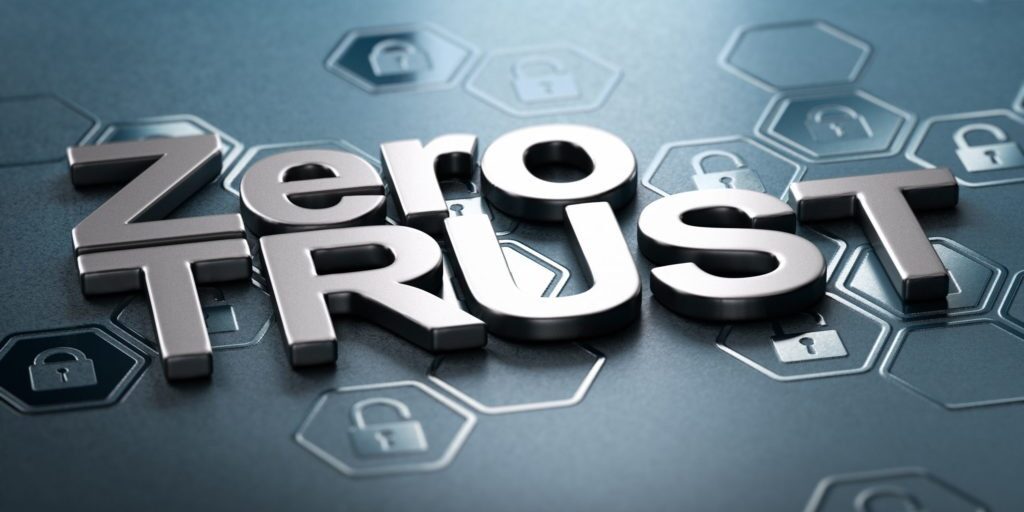
What is zero-trust?
We’ve seen many cybersecurity strategies over the years. As cybercriminals try ever-more ingenious attack techniques, businesses and IT experts must develop increasingly sophisticated defenses to protect sensitive data. Nowadays, zero-trust, an all-new approach to data and network security, has become a buzzword in cybersecurity circles.
But actually, zero-trust is not a novel concept. The term “zero-trust” was first coined by Stephen Paul Marsh in his 1994 thesis “Formalising Trust as a Computational Concept.” He argued and proved that trust could be quantified mathematically and applied to computer security. It wasn’t until 2010 that renowned cybersecurity expert, John Kindervag, popularized what he called “The Zero Trust Model of Information Security” that the idea of zero-trust really took off.
What is zero-trust?
Zero-trust is an overarching cybersecurity model that follows the maxim “never trust, always verify” rather than the traditional security notion of “trust, but verify.” This security approach dissolves all trust distinctions. In this system, until verified, all network traffic, devices, users, and requests are considered threats. It’s similar to the presumption of guilt, where every crime suspect is guilty until proven innocent.
The fundamental principles of zero-trust
Zero-trust is not a single solution, measure, or tool; think of it as a template on which to lay security policies and active protocols. The zero-trust model is founded on three key concepts:
1. Continuously verify all digital assets and requests
Firstly, always be verifying. Without trust, every device connected to the corporate network is considered a threat. So, every request must be verified, regardless of its origin. Zero-trust policies are designed to verify network requests based on context rather than trust tokens. The context may be a combination of the device’s identity, location, access privileges and the nature of the request itself. This continuous verification usually requires regular IT auditing and mapping to model request expectations and finetune verification policies. For instance, a user leaves their workstation unattended and an unauthorized user gains access.
2. Limit and enforce strict access control
Access control is a vital component in zero-trust. A strict access control system prevents unauthorized access to protected resources. It usually means applying identity-based and role-based access controls such as multi-factor authentication and least-privilege access, respectively. These ensure that only authorized individuals with the appropriate rights can access protected assets. Network microsegmentation also limits privileged movements across a network by creating barriers between unrelated nodes.
3. Monitor network traffic
The third zero-trust concept double checks that only authorized persons and devices can make requests and access data or other assets on a network. This calls for round-the-clock network monitoring and logging. The idea behind active monitoring and logging is that if a threat actor manages to slip through the defenses, they’ll behave differently from legit users and can therefore be identified and flagged. Modern network monitoring tools have intelligent behavioral analytics that can pinpoint even the slightest differences between normal and malicious traffic.
Implementing zero-trust
Applying this to an existing security framework takes time and effort; it’s not something you can do overnight. Therefore, the best way to transition to zero-trust is by taking an incremental strategy through four maturity levels:
- Preparation
- Basic
- Intermediate
- Advanced
Each progressive stage should align more cybersecurity measures and policies, work processes, and digital operations with zero-trust principles. Learn more about zero-trust deployment in the NIST SP 800-207 publication.
The importance and benefits of zero-trust
Trust has no place in modern cybersecurity, not when your business relies on cloud systems, mobile apps, telecommuters, or sensitive data. The zero-trust model creates a more secure work environment by reducing the digital attack surface, providing visibility and control over users and endpoints, and lowering the potential impact and severity of cyber incidents. Also, zero-trust policies such as microsegmentation and least-privilege access make it easier to support and demonstrate compliance with data security and privacy standards such as PCI DSS, HIPAA, and CCPA. Overall, it is a more dependable philosophy on which to mold effective and meaningful cybersecurity policies.
Deploy zero-trust security
Humans are the weak link in security. So, heavy reliance on end users for cybersecurity is never the answer. Never trust, always verify, right? Therefore, GateKeeper utilizes continuous authentication to constantly verify users every second. This means a very high rate of authentications per minute. Always ensure the authorized user is in front of their authorized workstation. Begin your zero-trust journey with GateKeeper’s advanced identity and access management solutions. We help businesses implement robust access control and trustless user verification through our 2FA solution, passwordless authentication, proximity-based login, and more. Therefore, less stress on IT admins and end users alike. Reach out to get started with a cybersecurity solution that actually makes security easier for everyone.
See GateKeeper Enterprise advanced MFA in action.
Take a self-guided tour of how you can evolve from passwords. Then you're really saving time with automation.




